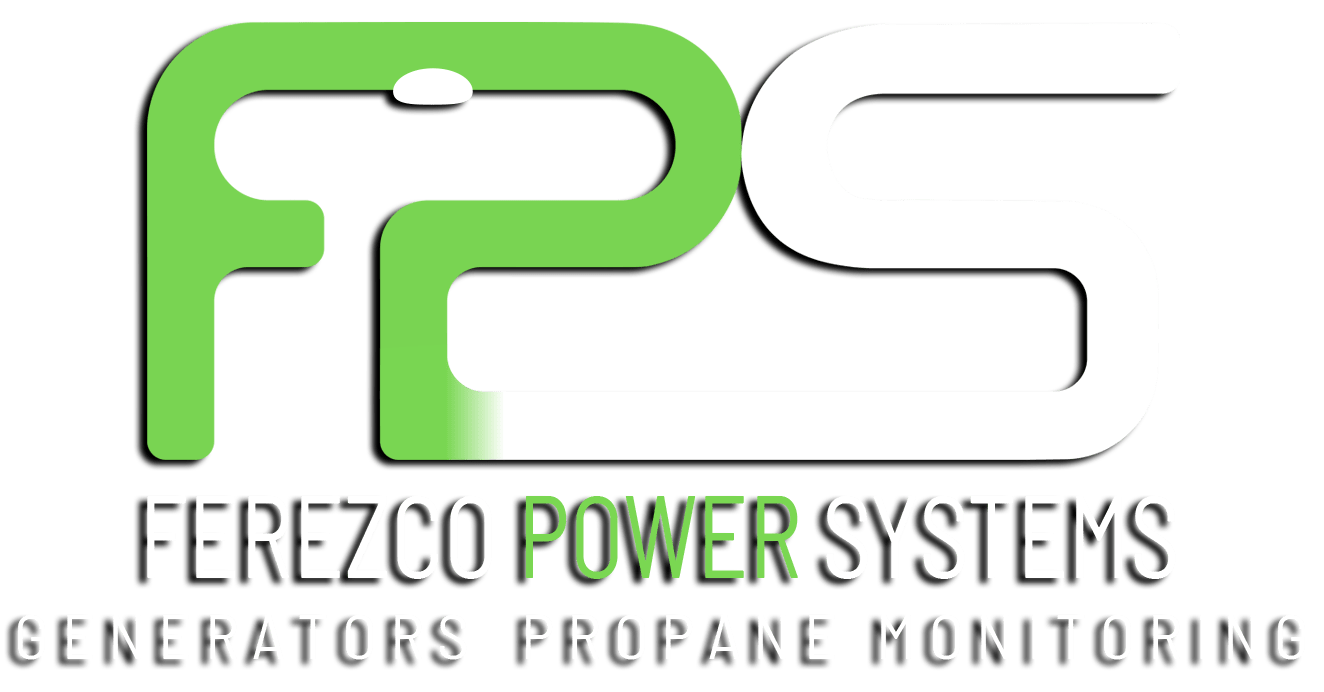There have been a lot of wildfires, storms, and power grid failures in North America that have changed how homeowners are preparing for emergencies. In this, solar generators have turned out as a clean alternative to old gas-powered backup systems. It offers portable electricity without any noise, fumes, or maintenance headaches.
Industry research shows the global solar generator market (at $549 million in 2023) doubling by 2033. This is increasing because of the growing demand for sustainable energy solutions. This shows how there is a shift toward resilient, eco-friendly power options that work during emergencies as well as everyday scenarios.
This detailed guide will give you information about the best solar generators available in 2025. Know if any of these generators are suited for your home by looking at their performance testing data, practical buying advice and others.
How We Picked the Top 10 Solar Generators (Review & Testing Criteria)
Our testing methods are focused on real-world performance rather than just limiting it to manufacturer specifications. With each generator, we did a strict assessment and came across these metrics:
- Actual runtime with common household appliances like fridges, fans, medical devices, and electronics.
- Charging performance under different conditions (including cloudy days and pass-through operation).
- Build quality and durability for emergencies.
- User interface and easy operation during power outages.
- Value proposition with capacity, features, and warranty coverage.
We prioritised generators with LiFePO4 and solid-state batteries for their safety profiles and longer lifespans. So, our recommendations have the best long-term investments available today.
Charging Efficiency & Speed
When the power is out, every hour counts. Our testing showed differences in charging capabilities, some solar generators recharge in under 2 hours. Some of the other models take a whole day, depending on the method.
Fastest AC Charging:
- EcoFlow River 2 Pro: Charges from 0-100% in just 70 minutes.
- Jackery Explorer 2000 Plus: Wall + solar input fully charges it in about 2 hours.
This recharge speed is very important when you are using a generator with an electrical transfer switch. It helps in faster recharging, which means less downtime for needed home circuits.
Solar Charging Performance:
- 200w panel → 100Wh unit = ~6-8 hours on a clear, sunny day.
- Cloudy weather increases charging time by 2x-4x.
- MPPT controllers help in maximising efficiency even when they are partially in shade.
Most of our top picks support pass-through charging, helping you to power devices while it is recharging (at a lesser rate). It is an important feature during long outages when you need to maintain power for necessary devices.
Battery Capacity & Actual Runtime
This affects how long you can run your devices before needing to recharge.
| Capacity Range (Wh) | Best For | Example Models |
| 300-600 | Phones, routers, fans, lights | Anker 535 (512Wh, 500W) |
| 1000-1500 | CPAPs, mini-fridges, laptops | Bluetti AC180, EcoFlow DELTA 2 |
| 2000+ | Full fridges, TVs, and longer outages | Jackery 2000 Plus, Yoshino B2000 |
A full-size refrigerator usually consumes 80-120 watts/hour, meaning a 2000Wh generator can keep it running for 8-12 hours continuously or for longer if used smartly. So, when you are planning to get a generator transfer switch installation, think about which appliances you will need to power and for how long.
Portability
Solar generators are a lot lighter than older gas units. The weight is different across models. If you plan to move your generator frequently, pay attention to weight, handle design, and wheel quality.
Lightweight & Compact Options:
- EcoFlow River 2 Pro: Just 18.2 lbs, easy one-handed carry.
- Anker 535: Compact 500w model that fits in a closet or RV cabinet.
Heavier but Higher-Capacity Units:
- Jackery Explorer 2000 Plus: 62.8 lbs, comes with an optional cart.
- Goal Zero Yeti 1500X: Built-in handles, strong case.
For models made for home backup with a transfer switch, portability may be less important than capacity, but still think about how you will move it during setup or even maintenance. Choose a model with telescoping handles and rugged wheels if you plan to move it for outdoor setups.
Solar Panel Compatibility & Input Capacity
Most solar generators work with a range of solar panels, but compatibility differs by model. You will find connection ports like MC4, 8mm, and Anderson Powerpole across different brands.
Factors to Consider:
- Maximum solar input (W):
- Jackery 2000 Plus = up to 1000W
- Bluetti AC200MAX = up to 700W
- Panel compatibility: Match your generator with foldable panels or suitcase-style hard panels.
- Included adapters: Many units come with MC4 or 8mm adapters, but always double-check.
- Expandable systems: Some allow linking extra panels or battery packs for longer runtime.
For home backup applications with an electrical transfer switch for generator use, higher solar input capacity means faster recharging in daylight. It will increase your off-grid capacity in longer outages.
Durability and Weather Resistance
Not all solar generators are designed for rugged outdoor conditions. Some give basic splash protection, while others have features like weather sealing for longer outdoor use.
- IP Ratings:
- Power Stations = usually IP54 (dust/splash protection)
- Solar panels = IP65-IP67 (waterproof in rain)
- Ruggedised bodies with rubber bumpers and flame-retardant housing are best for emergencies.
- Warranty Coverage:
- Bluetti and Anker = 5 years
- Jackery = 3 years
Weather resistance becomes important when using these systems for emergency backup, as power outages usually happen when there are severe weather events.
Value & Price-to-Performance
Not everyone needs a $2,000 power station. Our evaluation was about dollar-per-watt-hour, real-life performance. It included accessories to identify the best values at different prices.
Best Budget Options: Anker 535 PowerHouse (~$499)
- 512Wh, 500W inverter, LiFePO4, 4 AC ports
- Great for small apartments, students, or camping.
Best Overall Value: EcoFlow DELTA 2 Max (~$1,899)
- 2048Wh, 2400W output, LiFePO4, 15-year battery life.
- Expandable up to 6kWh, fast 80-min recharge
Best Innovation:Yoshino B2000 SST (~$1,599)
- Solid-state battery = lighter, safer, 2000W output
- Compact form factor, best for mobile setups
When evaluating generators for use with a home transfer switch installation, think about initial cost and long-term value, including battery lifecycle, warranty coverage, and expansion options.
The 10 Best Solar Generators of 2025 (Tested & Ranked)
1. Jackery Explorer 2000 Plus – Best Overall Performance
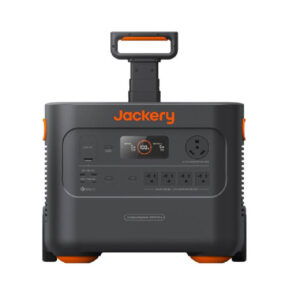
Jackery is a powerhouse made specifically for serious home backup scenarios. Its huge 3000 W output can handle energy-intensive appliances like coffee makers, microwaves, and even small space heaters. When it is paired with an electrical transfer switch for generator use, it can power designated home circuits during increased outages.
- Battery: 2042Wh (LiFePO4)
- Output: 3000W (surge 6000W)
- Solar Input: Up to 1000 W
- Recharge Time: ~2 hours (AC + solar)
- Expandable: Yes, up to 12 kWh
- Pros: Versatile ports, excellent reliability, lightweight relative to capacity.
- Cons: Slightly pricier compared to mid-range options.
- Considerations: At 62.8 pounds, it’s decidedly not portable without its optional wheeled cart. The Jackery-branded solar panels deliver excellent performance but command premium prices compared to third-party options.
2. EcoFlow River 2 Pro – Best Value (Affordable & Effective)
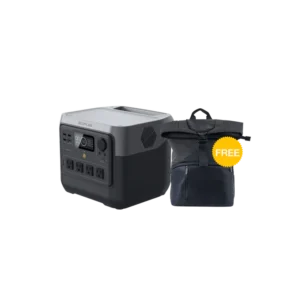
It redefines expectations for compact solar generators. It offers remarkable charging speed and output that weighs just 18 pounds. During our testing, it easily powered a CPAP machine for multiple nights on a single charge, making it ideal for medical device backup.
- Battery: 768Wh
- Output: 800W (surge 1600W)
- Recharge Time: 70 minutes (AC)
- Weight: 18.2 lbs
- Solar Input: 220W (full charge in 3-4 hours)
- Pros: Great price-to-capacity ratio, compact design.
- Cons: Lower total wattage might not handle large appliances.
- Considerations: The limited capacity limits its usefulness for powering large appliances or multiple devices at the same time for longer periods.
3. Bluetti AC500 with B300S Expansion – Best High-Capacity (For Full-Home Backup)
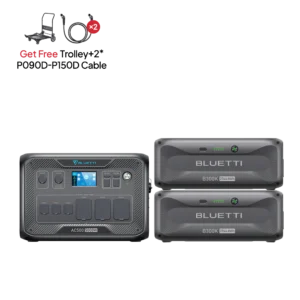
Its modular design allows you to start with a single battery, which can be expanded as you need. When paired with a professional generator transfer switch installation, it can power needed home circuits for days. During testing, it can handle full-size ridges, well pumps, and even heating systems. It also has industry-leading solar input capacity. It can recharge the entire system in just a few hours of good sunlight.
- Battery: Base 3,072Wh (expandable – LiFePO4)
- Output: 5000W (surge 10000W)
- Solar Input: Up to 3,000W (full charge in just 1.5 hours with full panels)
- Recharge Time: 1.5 hours (AC + PV combined)
- Expandable: Yes, up to 18 kWh with six B300S batteries
- Pros: Powers large appliances, suitable for extended off-grid living.
- Cons: Heavy, less portable without wheels or a trolley.
- Considerations: It gets extremely heavy with multiple battery packs, with 100+ pounds. The per-watt-hour cost becomes quite reasonable when it is expanded, and the 10-year lifespan makes it economically competitive with old generators when thinking about fuel and maintenance costs over time.
4. Anker 535 PowerHouse – Most Portable (Lightest and Easiest to Carry)
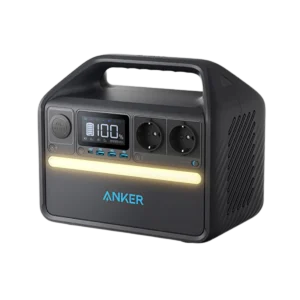
It comes under $500, giving you the same high-quality LiFePO4 battery technology found in much more expensive units. It has a compact size and lightweight design that makes it perfect for apartments, dorm rooms, or camping trips where mobility is important.
- Battery: 512Wh (LiFePO4)
- Output: 500W
- Recharge Time: 4.5 hours (AC)
- Solar Input: 120W (charges in 4-5 hours)
- Weight: 16.7 lbs
- Pros: Extremely portable (less than 10 pounds), ideal for camping.
- Cons: Limited to smaller electronics, not suitable for heavy appliances.
- Considerations: The 500W output limitation means that it can’t handle energy-intensive appliances like coffee makers or hair dryers. Although it excels at powering electronics, lights, and small fans.
5. EcoFlow Delta 2 Max – Fastest Solar Charging
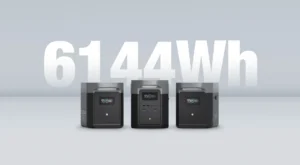
It has the perfect balance between capacity, charging speed and flexibility. During our testing, it powered a full-size refrigerator for over 14 hours on a single charge. It has a fast 80-minute recharge time (from wall outlet), which means minimal downtime between uses, and a strong app allows for accurate power management from your smartphone.
- Battery: 2048Wh (LiFePO4, 3000+ cycles)
- Output: 2400W (surge 4800W), 15 ports
- Solar Input: Up to 1000 W (fully charges in about 2 hours)
- Recharge Time: 80 minutes (AC), 2.3 hours (solar)
- Expandable: Yes, up to 6 kWh
- Pros: Quick recharge, multiple charging methods.
- Cons: Higher fan noise when under heavy load.
- Considerations: At 50 pounds without wheels, it’s not the most movable option, but the sturdy built-in handles make short-distance moving manageable. The higher price is for its premium features. The 5-year warranty and good battery longevity justify the investment.
6. Goal Zero Yeti 1500X – Most Durable & Rugged
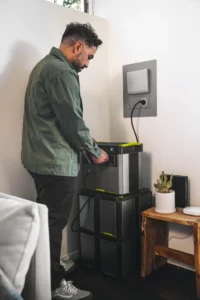
It has a reputation for rugged reliability that shines through in the Yeti 1500X. It features exceptional build quality and a thoughtful design that prioritises durability in challenging environments. The app gives detailed power monitoring and management capabilities.
- Battery: 1516Wh (Li-ion NMC)
- Output: 2000W
- Solar Input: Up to 600W (3-4 hours to full charge)
- Pros: Sturdy build, perfect for harsh outdoor environments.
- Cons: Heavier, making it slightly less portable.
- Considerations: The NMC battery chemistry offers fewer charge cycles than newer LiFePO4 alternatives. It still provides years of good service.
7. Jackery Explorer 1000 Pro – Easiest to Use (User-Friendly Design)
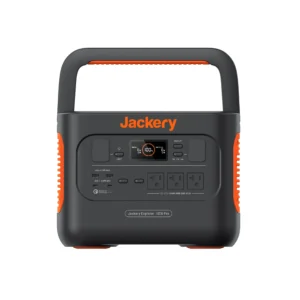
It stands out because of its interface, which makes power management accessible to everyone. It has an LCD that gives you real-time information on battery status, input/output watts, and remaining runtime. With straightforward controls and clearly labelled ports, even first-time portable power station users can easily operate it without consulting the manual.
- Battery: 1002Wh
- Output: Multiple ports for versatile charging
- Solar Input: 800W (full charge in about 1.8 hours)
- Recharge Time: ~1.8 hours (with max solar input)
- Weight: Lightweight and portable design
- Pros: Easy-to-understand interface, perfect for first-time users.
- Cons: Limited expandability compared to larger models.
- Considerations: Even though the highest capacity option available, the 1002Eh battery gives an excellent balance between power capabilities and manageable size. The fast charging capability with solar makes it ideal for outdoor adventures where user-friendly operation is necessary.
8. Bluetti AC200MAX – Best Smart Features (Apps & Connectivity)
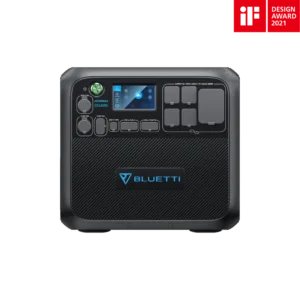
Its modular design allows for remarkable flexibility. You can start with a base unit and add expansion batteries as your needs grow. This approach is important for those planning generator transfer switch installation for home backup, as it helps you to scale the capacity to your needs.
- Battery: 2048Wh (LiFePO4)
- Output: 2200W (surge 4800W)
- Solar Input: 900W (charges in approximately 3 hours)
- Recharge Time: ~3 hours
- Pros: Remote monitoring/control, detailed usage stats.
- Cons: Heavy, best for semi-permanent setups.
- Considerations: The touchscreen interface is intuitive, but sometimes sluggish during our testing. Its bulk without wheels makes it less suitable for frequent relocation.
9. Yoshino B2000 Solid-State Generator – Quietest Operation
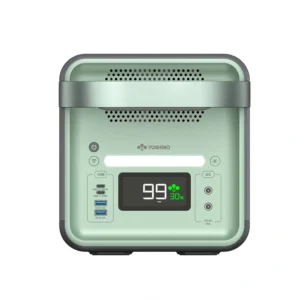
This will give you peace and quiet. The old gas generators need a generator transfer switch installation for home integration, but this unit works with zero noise, making it perfect for camping, sensitive environments, or nighttime emergency use.
- Battery: 1326Wh
- Output: Multiple high-efficiency ports
- Solar Input: Up to 400W (charges in about 3-4 hours)
- Recharge Time: ~3-4 hours (with max solar input)
- Noise Level: Virtually silent operation
- Pros: Low noise, compact, solid-state reliability.
- Cons: Slightly higher cost due to advanced technology.
- Considerations: it doesn’t need an electric transfer switch for generator connection, like most models. It is the quietest power solution and is ideal for situations where noise reduction is top priority.
10. Renogy Phoenix 2000 – Best Warranty and Customer Support
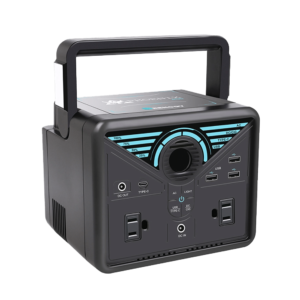
It stands out in a crowded market as it has a detailed 5-year warranty that provides unmatched peace of mind for your investment. They have responsive customer service that will address every problem. From basic troubleshooting to complex questions about the electrical transfer switch for generator integration.
-
- Battery: 1891Wh
- Output: Multiple port configuration for versatile use
- Solar Input: 600W (charges fully in about 3-4 hours)
- Recharge Time: ~3-4 hours (with max solar input)
- Warranty: Industry-leading 5-year coverage
- Pros: Long-term peace of mind, great customer support, sturdy design.
- Cons: Slightly bulky, moderate portability.
- Considerations: They have the best support service. The unit has 600W solar input that provides solid recharging performance, making it an excellent option for those who want long-term reliability.
Solar Panels & Generators: What You Need to Know Before Buying
Portable power solutions have changed from luxury camping gear to important home backup systems. Whether you’re preparing for emergencies, planning an off-grid adventure, or anything else, it is important to understand solar generators.
How to Choose the Right Solar Panels
The relationship between your solar panels and generator is important for the best performance. Here is what is recommended:
- Match specifications carefully: Make sure your panel wattage and voltage align perfectly with your generator’s input capabilities.
- Avoid oversizing: It might seem logical to connect higher-wattage panels, but exceeding your generator’s maximum solar input can damage internal parts.
- Aim for maximum input: For fastest charging, select panels that can get maximum solar input capacity (usually 400- 1000w).
- Panel type matters: Monocrystalline panels are more efficient in limited sunlight, making them worth the price for most users.
Common Solar Panel Integration Mistakes to Avoid
- Voltage mismatch: Most generators accept 12- 60v input. Check if your panels are within this range.
- Connection inefficiency: Use proper cabling with MC4 connectors or XT60/7909 plugs to reduce power loss.
- Partial shading: Even less shade on one panel can reduce output across your entire array.
- Home integration without safety safeguards: If powering home circuits is your goal, an electrical transfer switch for generator connection is non-negotiable for safety.
Generator Transfer Switch Installation: A Critical Safety Measure
Connecting your solar generator to your home’s electrical system needs careful planning and professional installation.
- Prevents dangerous backfeeding: Without a proper transfer switch, power from your generator can flow back into utility lines. This creates hazards for utility workers.
- Enables selective circuit powering: With a professional electrical transfer switch for generator integration, you can choose which circuits should have backup.
- Legal requirement: In most jurisdictions, generator transfer switch installation by a certified electrician is compulsory by building codes.
Safety First: Never try to power home circuits by simply plugging your generator into a wall outlet. This ‘backfeeding’ practice is both illegal and dangerous.
Realistic Charging Times Under Various Conditions
Understanding the real-world charging times will help you set the right expectations for your generator:
- A 200W panel might need 8-10 hours of sunlight to charge a 1000Wh generator.
- A 600W array can usually complete the same charge in 3-4 hours.
- Temperature extremes also impact the performance. Most generators won’t charge below freezing, and capacity can drop by 20-40% in cold weather.
How Much Solar Generator Capacity Do You Really Need?
Calculating your power requirements is important for selecting the right capacity. Here’s a practical approach:
Calculate Watt-Hours for Essential Devices
- 60W LED Lamp x 5 hours = 300Wh
- 50 laptop x 4 hours = 200Wh
- Mini-fridge (150W running, cycling on/off) = 500-800Wh per day.
Typical Usage Scenarios
- Camping/Outdoor Recreation:
- 200-500Wh per person per night
- Covers lighting, device charging, small fans, and portable refrigeration.
- A 500- 1000Wh unit usually serves 1-2 people comfortably.
- Van Life/RV Applications:
- 1500-3000Wh recommended
- Supports occasional use of microwaves, coffee makers, and limited air conditioning.
- Higher capacity that allows multiple days between charges.
- Home Emergency Backup:
- Focus on necessary circuits: refrigeration, lighting, communication devices.
- 2000-3000Wh with a string inverter (2000W+) handles multiple appliances at the same time.
- Remember: no portable solution can power an entire house continuously.
Planning Tip: Calculate your needs, then add a 20-3-% safety margin. For emergency preparedness, design your system to operate necessary devices for at least 48 hours without recharging.
Safety and Maintenance: Keeping Your Solar Generator Healthy
Proper maintenance can really increase your investment’s life:
Best Practices for Long Battery Life
- Perfect storage charge: Keep at 50-80% capacity during extended non-use periods
- Avoid deep discharges: Completely depleting lithium batteries accelerates degradation.
- LiFePO4 advantage: These batteries offer 2000-3000 cycle lifespans, far outlasting old lithium-ion options.
- Regular exercise: Run your generator at least quarterly to maintain battery chemistry.
Environmental Considerations
- Temperature sensitivity: Performance drops below 32F, and charging may be impossible.
- Heat protection: Never leave your generator in hot vehicles or direct sunlight when not in use.
- Ventilation requirements: Always operate on stable surfaces with adequate airflow.
Integration Safety
- Professional installation: When connecting to home circuits, always call certified electricians for generator transfer switch installation.
- Proper cabling: Use manufacturer-recommended connections and never modify power cords.
- Circuit protection: Respect the built-in overcurrent protection and never bypass safety features.
Final Verdict: Which Solar Generator Should You Buy in 2025?
After extensive testing and expert consultation, some models stand out in today’s market:
Overall Best: Jackery Explorer 2000 Plus
This powerhouse delivers the complete package with:
- Massive 2043Wh capacity using advanced LiFePO4 chemistry.
- Strong 3000W output handling multiple appliances at the same time.
- Industry-leading solar charging capability (full charge in ~2 hours with maximum panel configuration).
- Expandability options for increased capacity.
The only significant trade-off is weight and initial investment cost.
Value Leaders:
- EcoFlow River 2 Pro: Excellent performance-to-price ratio for moderate power needs.
- Anker 535: Reliable operation with surprising capability in a compact form factor.
Maximum Power Options:
- Bluetti AC500: Uncompromising output for demanding applications.
- EcoFlow Delta 2 Max: Industrial-grade performance with remarkable solar charging speeds.
For most users in 2025, high-capacity LiFePO4 units like the Jackery 2000 Plus (or comparable Bluetti/ EcoFlow alternatives) give the best balance of runtime, recharge speed, and longevity. It covers everything from weekend camping to critical home backup during extended outages.
Whatever model you select, make sure it aligns with your specific capacity and output requirements. And remember, for safe integration, professional generator transfer switch installation is important for both safety and peace of mind.


